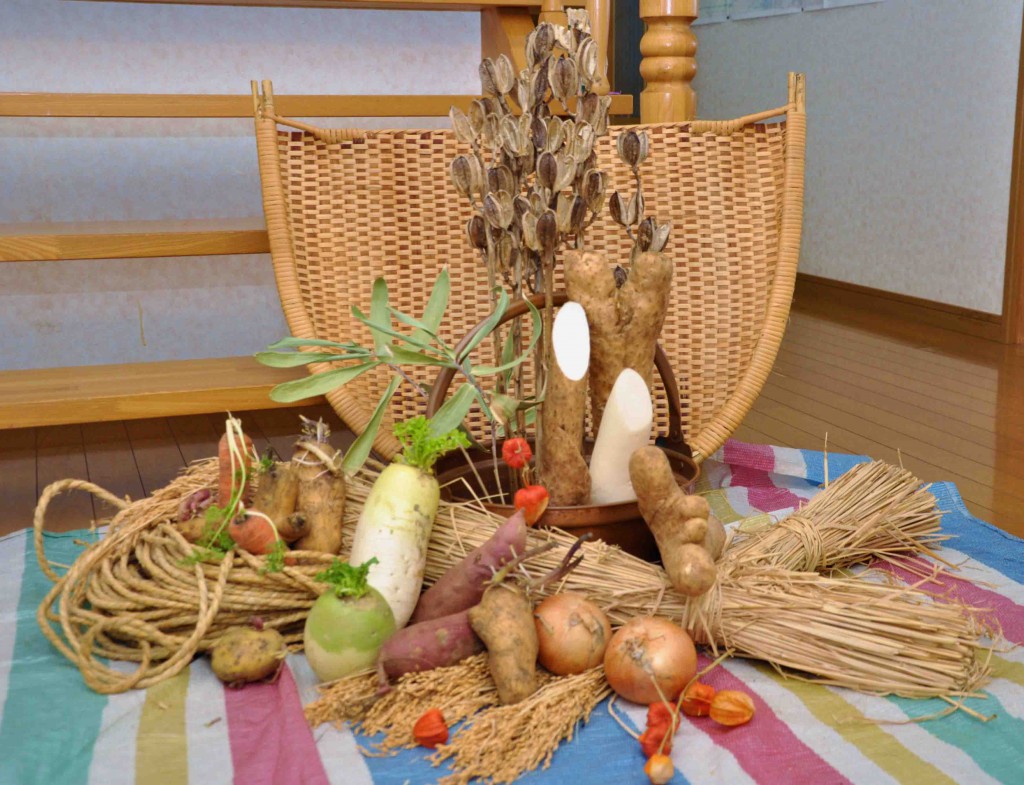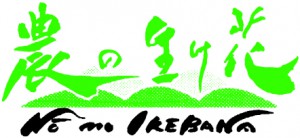
It’s my turn! Spring has come!
Containers: Copper pot, straw rope, and winnowing basket
Vegetables and plants: Chinese yams, potatoes, Japanese radishes, carrots, sweet potatoes, onions, Chinese lantern plants, kuma bamboo grass, Cardiocrinum cordatum, and rice stalks
 “Noh no Ikebana” is a type of Japanese flower arrangements in which farmers arrange agricultural products using agricultural implements and other familiar instruments as containers. In this series of articles, experts of “Noh no Ikebana” from all over Japan will demonstrate how you can best arrange the materials and containers you choose.
“Noh no Ikebana” is a type of Japanese flower arrangements in which farmers arrange agricultural products using agricultural implements and other familiar instruments as containers. In this series of articles, experts of “Noh no Ikebana” from all over Japan will demonstrate how you can best arrange the materials and containers you choose.
Keiko Kowata, 79, Iwate Prefecture, has 40 years of experience in Noh no Ikebana.
Root vegetables are suitable for the arrangement to be displayed for a long period of time, as they often require no water. In autumn, you can use fresh vegetables with leaves in order to celebrate harvest season. In winter, it will be interesting to show one of the processes of making dried Japanese radish. In spring, it will be nice to use sprouting vegetables.
Long vegetables can be put in a basket or stuck onto kenzan pinholders. When the tip of the root is pointing upward, the power of the earth will be emphasized, and when it’s pointing downward, the freshness of the vegetables will be emphasized.
It’s ok to use the vegetables both washed and unwashed. By using unwashed vegetables, you can create an image that they are right out of the ground or the storage. In this case, it’s recommended to add something with pretty color to avoid making your arrangement look too simple. But make sure not to choose something too strong as it may steal the spotlight.
By using a winnowing basket, a harvesting basket and a cooking pot, you can effectively call up an image of harvesting or enjoying the vegetables on the table. It’s also a good idea to use straw rope to resemble soil.
Main characters of this arrangement are the root vegetables that I harvested last autumn. I tried to emphasize young leaves sprouting from them in order to show how energetic they are after the long winter.


